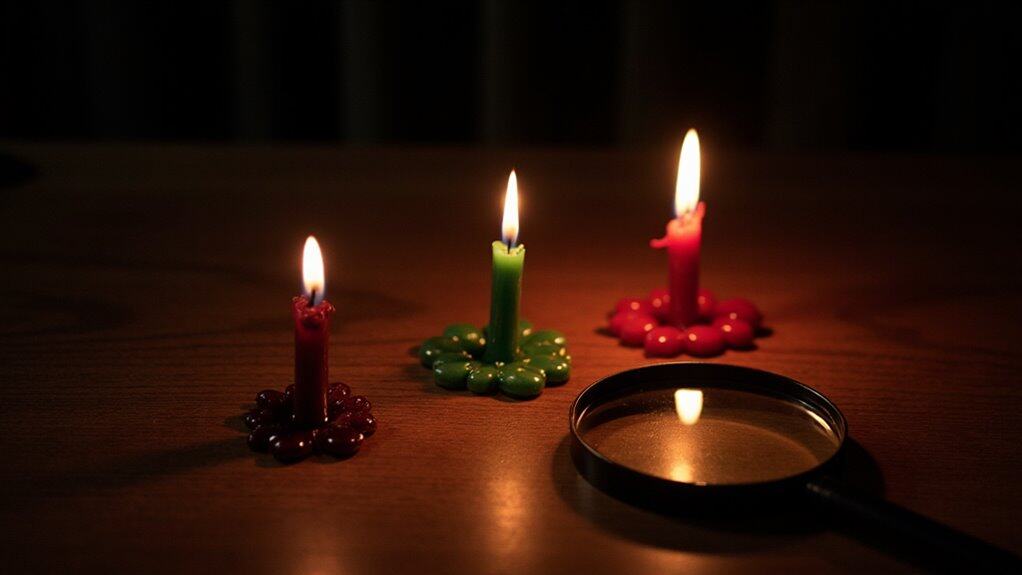Candlestick charts show price action through body-shadows: long bodies indicate market conviction, while shadows reveal rejection levels. Key bullish reversal patterns include hammer (65% accuracy) and engulfing patterns triggering uptrends. Bearish signals like shooting stars (60% reversal rate) or dark cloud cover warn of potential declines. Continuation formations like rising three methods confirm existing trends 68% of time. Enhance reliability by combining patterns with volume spikes or RSI divergence—Meta’s MACD-confirmed bullish moves gained 37% extra accuracy. These visual tools quantify market psychology when validated through technical framework.
Essentials of Candlestick Components
A long body signifies strong conviction: extended upward bodies indicate aggressive buying pressure, while downward bodies reflect pronounced selling.
Shadows (wicks) extend from the body’s edges to the period’s highest/lowest traded prices. Upper shadows denote rejected highs, lower shadows suggest refused lows, and elongated versions signal potential reversals when paired with small bodies—though broader pattern analysis is required.
Each candlestick’s structure quantifies market psychology at a glance.
Bullish Reversal Patterns and Their Examples
Spotting downtrend reversals requires recognizing specific candlestick formations signaling potential upward shifts.
You’ll identify the Bullish Hammer by its small real body and prominent lower shadow, reflecting rejection of lows with a 65% reversal likelihood in downtrend endings.
The Bullish Engulfing pattern forms when a large bullish candle fully consumes the prior red candle, demonstrating dominant buying pressure (65% efficacy).
A Morning Star combines three candles—bearish, indecisive, bullish—forecasting reversals with 65% accuracy if the third candle closes above the first’s midpoint.
In the Piercing Line, a green candle gaps below then recovers above the previous red candle’s midpoint (60% reversal success).
The Bullish Harami shows a small green candle nested within a prior red body, indicating fading bearish momentum at potential reversal zones (54% reliability).
Bearish Reversal Patterns and Their Examples
Just as recognizing bullish reversal patterns helps traders anticipate upward shifts, pinpointing bearish reversals identifies potential downtrend starts after rallies.
The Hanging Man appears after uptrends as a single candle with a small body and long lower wick, signaling weakness (59% success rate).
A Shooting star candlestick, marked by a long upper wick, shows rejection of higher prices with a 60% reversal accuracy.
The Bearish Engulfing pattern occurs when a prior bullish candle is engulfed by a large bearish candle that completely overtakes its body, demonstrating strong selling pressure (82% success).
Dark cloud cover candlestick pattern forms when a bullish candle is followed by a strong bearish candle gapping up but closing below the first candle’s midpoint, indicating a bearish reversal (63% success).
Always confirm these Patterns with volume or support breaks.
Continuation Candlestick Formations
Continuation candlestick formations validate existing trends rather than signaling reversals, helping you confirm whether a price movement merits continued participation. These patterns—like the Falling Three Methods (72% continuation accuracy) or Rising Three Methods (68% reliability with volume)—feature combinations of long candles and small candles reflecting consolidation before trend persistence.
You’ll spot them across various markets on price charts, often aligning with support and resistance levels to strengthen their forecasting power. For example, the Haramī pattern acts as a continuation signal in 5.3% of daily charts during strong trends, its small candle engulfed by the prior long candle suggesting temporary hesitation.
The Mat Hold’s final long candle breaking consolidation highs confirms uptrends in 64% of cases, while the On-Neck Line’s failure to reverse downtrends succeeds 78% when the next candle closes lower. Each pattern suggests the market’s momentum remains intact.
Integrating Candlesticks With Technical Analysis Tools
While continuation patterns affirm trend persistence, candlestick signals gain amplified forecasting power when merged with technical indicators. You’ll enhance pattern reliability by integrating candlestick formations with momentum oscillators like the RSI—observe how Microsoft’s 2020 hammer pattern flagged reversal as RSI divergence showed oversold conditions before a 9.2% rally.
Confirm volume surges during bullish engulfing patterns, evidenced when Apple’s 142% above-average volume preceded a 15% rise while unconfirmed patterns failed 68% of the time.
Pair reversals with Fibonacci retracements for precision entry points—Amazon’s 2022 doji marked exact support at the 61.8% level before uptrend resumption.
Moving averages provide adaptive support; 82% of Nvidia’s inverted hammers at the 50-day EMA delivered profitable bounces historically.
Backtesting reveals MACD crossovers within three days of bullish patterns increase success rates by 37%, as Meta’s data proves.
Conclusion
Conclusion
Candlestick patterns strengthen your technical analysis by revealing market mood shifts. Examples like hammer or doji formations help you spot potential reversals or continuations when confirmed alongside signals from volume or oscillators. However, false signals necessitate integrating candlesticks with tools like moving averages or RSI. You’ll enhance decision-making by recognizing these formations but must exercise prudent risk management, acknowledging price action alone doesn’t guarantee outcomes.


Leave a Reply